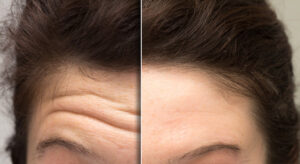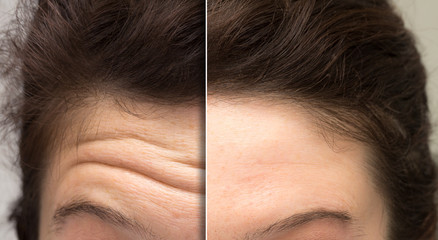Botox is a popular cosmetic treatment that reduces wrinkles. Botox is also a great option for patients with excessive sweating. During the procedure, your practitioner will use a thin needle to inject botulinum toxin into muscles in different parts of your face. Then they’ll ask you not to rub the area.
 Botox is an injectable treatment that reduces wrinkles and can help treat medical conditions related to the nervous and muscular systems. It is one of the most common cosmetic treatments in the United States, used by more than 4.5 million people in 2016.
Botox is an injectable treatment that reduces wrinkles and can help treat medical conditions related to the nervous and muscular systems. It is one of the most common cosmetic treatments in the United States, used by more than 4.5 million people in 2016.
The main ingredient in Botox is onobotulinumtoxinA, which blocks nerves from signaling muscles to contract. It was the first drug to use this toxin, which is also found in a strain of bacteria that can cause botulism, a serious illness. Other products that use this toxin include Dysport, Xeomin, and Myobloc. Those products are similar, but they vary slightly in their formulation.
Botox is considered safe and effective by the FDA. It can cause side effects but is rare and usually limited to bruising and headaches. It is important to avoid rubbing or massaging the injection area after treatment to prevent the toxin from spreading to a different part of your body. Depending on where the toxin travels, it can weaken muscles that control swallowing or breathing in the mouth, throat, and neck. Those symptoms may appear hours to weeks after the injections.
Botox is injected into fine lines and wrinkles around the eyes and forehead for cosmetic purposes. It can also be injected into the muscles that cause neck spasms, overactive bladder, and excessive sweating. It is also used to treat a lazy eye and can help prevent chronic migraine headaches.
It is important to discuss your health history with your doctor before getting Botox. It is not recommended if you are pregnant or breastfeeding or have any known allergies to the ingredients. It is also important to tell your doctor if you have certain medical conditions, such as a bleeding disorder or nerve disorders.
Botox is made from donated human plasma. Donated plasma is tested and treated to lower the risk of disease transmission, but there is a small chance that viruses or other infectious agents could be transmitted through it. You should not get Botox if you are taking medications that interfere with blood clotting, such as alteplase, clopidogrel, dipyridamole, or ticlopidine.
Botox is a purified protein that weakens muscles when injected in small doses. It is made from a toxin produced by the bacterium Clostridium botulinum and, in small amounts, it can reduce skin wrinkles and treat medical conditions like neck spasms (cervical dystonia), excessive sweating, some bladder disorders and migraine.
The drug is delivered to the clinic as dry powder and diluted in saline, then injected into the neuromuscular tissue in the areas of the face to be treated. There are 43 muscles in the face and it is important that a trained healthcare professional understands the anatomy of the region and can pinpoint the correct spots for treatment. The injections are quick and painless.
Once the injections are in place, they begin to work immediately by blocking the nerve signals that cause muscles to contract. The treatment usually takes less than 15 minutes. There may be a little swelling, but it quickly goes away.
Many people use Botox to reduce the appearance of fine lines and wrinkles that result from everyday facial expressions such as smiling, frowning or squinting. Injections can also be used to improve the shape of the eyebrows, and to correct a chin that droops or protrudes. It can also be used to improve dark circles under the eyes by reducing muscle movement that causes them to appear darker.
It can also be used to treat some medical conditions, including some types of headaches, strabismus (crossing or misalignment of the eyes) and eyelid spasms (blepharospasm). A study suggested that Botox could help relieve urinary incontinence caused by an overactive bladder.
The FDA has approved the use of the drug for a limited number of other non-cosmetic uses. These include a condition called dystonia, which is a movement disorder characterized by involuntary contractions of the muscles in the neck, shoulders, arms and legs that can lead to pain, discomfort and restricted movement. It is also being tested in the treatment of chronic migraines and the effect on eye movements associated with ocular myokymia, a condition in which muscles around the eyes contract involuntarily, causing double vision.
Injectable wrinkle relaxers are incredibly safe as long as they’re used by an experienced doctor. Most patients experience only minor side effects and they’re typically temporary. However, some people have more severe reactions to Botox that can be permanent. These are usually caused by overuse or improper placement of the injections.
One of the most common side effects of Botox is a dry mouth. This happens because of the nerve block caused by the Botulinum toxin, which stops your body from producing saliva. It’s important to drink plenty of water during this time. You may also need to use eye drops or ointments for dry eyes.
Bruising and swelling are also common after Botox, as the tiny needle can damage blood vessels in the area. This is why it’s important to let your provider know if you take any medications, including muscle relaxants and sleeping aids, or if you have any allergies.
The FDA states that Botox is safe and effective for cosmetic use if it’s given by an experienced doctor, such as a plastic surgeon or dermatologist. It’s also important to choose a clinic or med spa that’s licensed and trained in the procedure. Otherwise, Botox could be injected incorrectly and cause botulism, which can be fatal.
In addition to reducing wrinkles, Botox can help with other conditions that affect the muscles and nerves. It can be used to treat conditions like uncontrolled blinking (benign essential blepharospasm), crossed eyes (strabismus), and neck pain from cervicomyositis. It can also be used to treat certain muscular conditions, such as upper limb spasticity or cerebral palsy.
It’s important to talk with your doctor before getting Botox, especially if you have any heart problems. The botulinum toxin can weaken your muscles, which can cause problems with your heart rhythm and even a heart attack. It’s also not recommended to get the injections if you’re pregnant or breastfeeding.
Botox is a neuromodulator, which means it can change the way your muscles and nerves work by blocking certain signals from reaching your brain. This can reduce or eliminate the appearance of wrinkles by preventing your face from moving.
The answer to this question will vary from person to person, but it is generally safe and effective to get Botox every three to four months. It is important to note, though, that the effects of Botox do eventually wear off. This is because your muscles will start to contract again, and the results from your Botox will begin to fade. To prevent this from happening, it is recommended that you continue to receive injections on a regular basis.
In addition to being used as a cosmetic treatment, Botox is also FDA-approved for treating conditions such as overactive bladder, excessive sweating, and chronic migraine headaches. It was actually discovered that this type of treatment could help prevent migraine headaches by slowing the muscle movement that causes them.
People of all ages can benefit from the use of Botox. It is often used by younger patients as a way to prevent wrinkles from forming by protecting their facial skin from over-contracting. However, it is just as common for older patients to seek out Botox treatments in order to improve the appearance of wrinkles that have already formed.
Before receiving Botox, it is important to discuss your medical history with your doctor. This will include a full list of any medications you are taking, as well as any allergies to certain substances. In some cases, it may be necessary to discontinue the use of certain medications before getting an injection. It is also a good idea to avoid alcohol and exercise for several hours before your appointment, as these can increase the speed at which your body processes the botulinum toxin.
It is also a good idea to ask your doctor about any pre-treatment procedures that may be required, such as numbing creams. While the needle used to inject Botox is much smaller than that of a blood draw, it can still be uncomfortable. Most people describe the feeling as being similar to having a mosquito bite. It is also important to understand that you will not see immediate results after your appointment, as it can take two or seven days for the effects of Botox to kick in.

